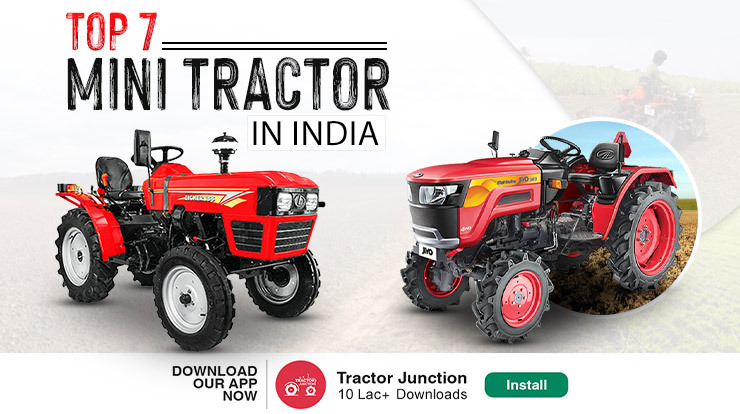Peas Farming in India: A Comprehensive Guide for Modern Farmers
Peas, known for their vibrant green colour and delightful taste, have long been a staple in Indian cuisine. Their popularity extends from home kitchens to the menus of fine restaurants. With an increasing demand for fresh and nutritious produce, peas farming in India has become a lucrative endeavour for farmers nationwide. This comprehensive guide will explore the key aspects of successful pea cultivation, from choosing the right seeds to harvesting and mechanising with tractors like the Swaraj and Solis.
Choosing The Right Variety Of Peas
The first step to embark on a successful peas farming journey in India is to select the right pea variety. Varieties like “Arkel,” “Lincoln,” and “Super Sugar Snap” are popular choices due to their high yields and adaptability to diverse Indian climates. When considering your options, consider your region’s needs and the demand for the particular pea variety in local markets.
Soil Requirement
Ensure the soil is rich in organic matter and adequately aerated for optimal pea growth. Proper soil preparation lays the foundation for a bountiful harvest.
Pea Planting
When it comes to planting peas, timing is crucial. In India, peas are typically sown during the cool season, which varies depending on your region. Generally, planting should be done in late October to December. Ensure proper spacing between rows and maintain a 2-3 inches distance between pea seeds. This allows for healthy growth and adequate airflow, reducing disease risk.
Irrigation
India’s diverse climates necessitate flexible irrigation practices. Adequate and timely watering is essential for pea cultivation. Drip irrigation or furrow irrigation systems are popular for maintaining soil moisture levels. Regularly monitor the soil’s moisture content and adjust your irrigation schedule to prevent under and overwatering.
Fertiliser Requirement
To ensure robust growth and high yields, proper fertilisation is essential. Conduct a soil test to determine nutrient deficiencies and adjust your fertiliser application accordingly. Peas benefit from balanced fertilisers with a higher phosphorus content. Apply fertilisers in stages, incorporating them into the soil during planting and side-dressing during the growing season.
Pest and disease control:
Peas are susceptible to various pests and diseases, which can significantly impact your harvest. Implement integrated pest management (IPM) techniques to control common pests like aphids and cutworms. Additionally, maintain proper plant spacing to improve airflow and reduce the risk of fungal diseases. Regular scouting and prompt action are key to successful pest and disease management.
Support Systems
Many pea varieties require support as they grow. Using trellises, stakes, or netting can help keep the pea plants upright and prevent lodging, especially during heavy wind or rain. Proper support ensures that the pea pods remain off the ground, reducing the risk of fungal infections and making harvesting easier.
Harvest and yield:
Knowing when to harvest peas is critical for achieving the best quality and flavour. Harvesting should begin as soon as the peas change from dark to green. Multiple pickings, typically four to five, can be done within a 6 to 10-day interval. Use sharp pruners or shears to cut the pea pods from the vine, taking care not to damage the plant. Ensure you harvest early or late afternoon when temperatures are cooler to preserve the peas’ crispness and flavour.
Swaraj Tractor in Peas Farming:
The Mini Tractor, a trusted name in the agricultural sector, offers the power and reliability needed for various farm operations, including pea farming. Its versatility makes it an excellent choice for toil preparation, planting, and irrigation. Swaraj tractors come in different models, allowing farmers to select the one that best suits their needs and farm size. The ease of use and robust performance of Swaraj tractors have made them a preferred choice for modern pea farmers across India.
Solis Tractor in Peas Farming:
Solis tractors have become well-known for their fuel efficiency and durability, establishing themselves as a viable choice for pea farming in India. These tractors come in models suitable for small and large-scale operations, offering flexibility and versatility. Solis Tractor Price reliably addresses various farming needs, whether ploughing fields, transporting harvested peas, or driving irrigation equipment. Their ergonomic design and user-friendly attributes make them a valuable asset for modern pea farming operations.
Conclusion: All You Need To Know More About Peas Farming
Peas farming in India presents an excellent opportunity for both seasoned and aspiring farmers. You can achieve a successful harvest by selecting the right pea variety, preparing the soil adequately, and implementing proper cultivation and mechanisation practices.
Tractors like the Swaraj and Solis have revolutionised Indian agriculture, making pea farming more efficient and productive. As you embark on your pea farming journey, remember that knowledge, technology, and dedication are the keys to a thriving and profitable pea cultivation venture in the diverse landscapes of India.







